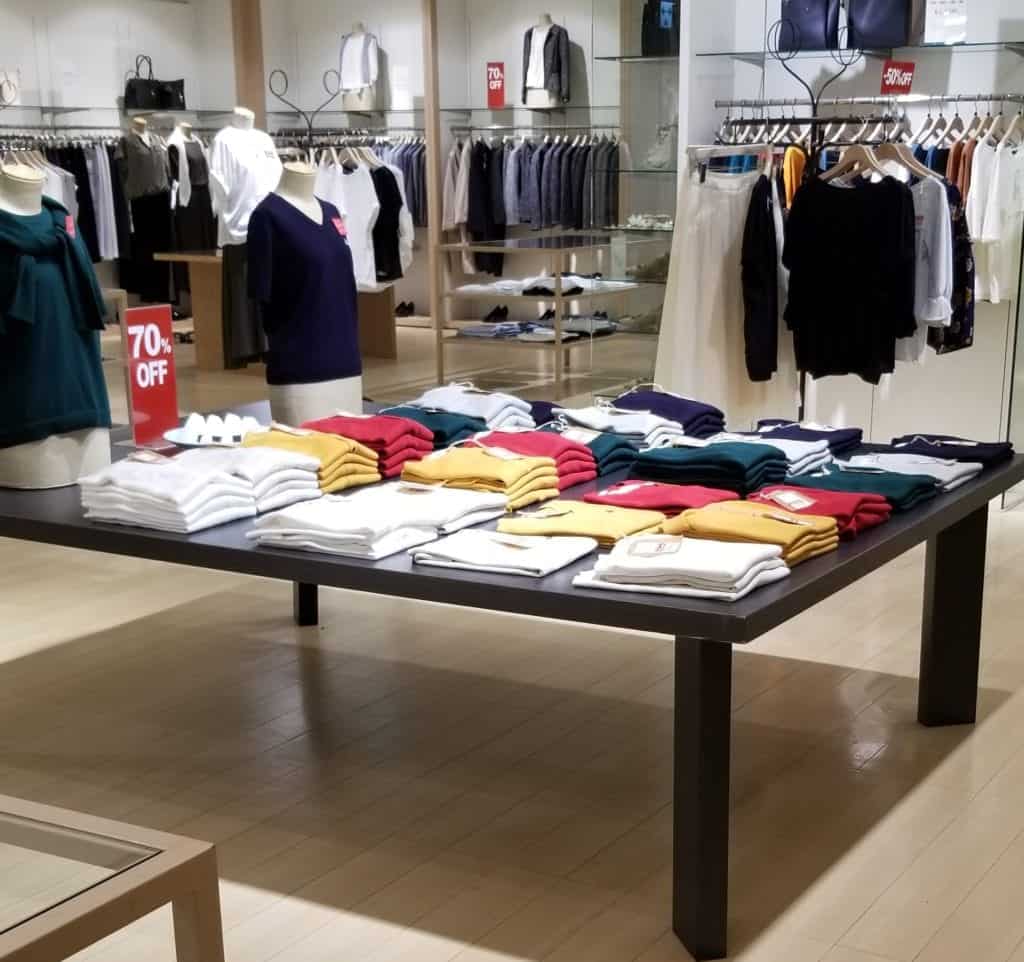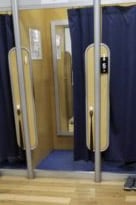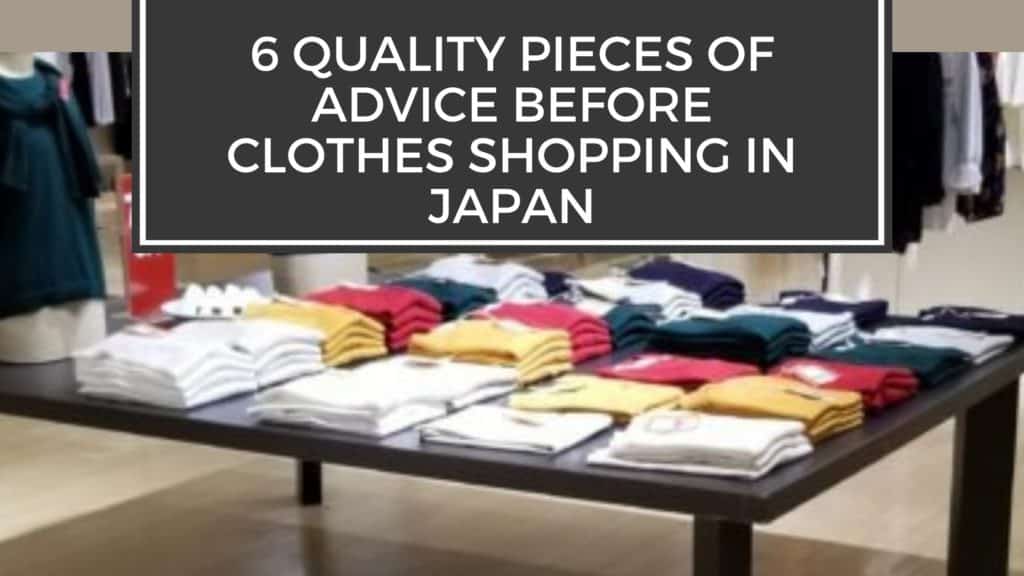A piece of insight into the person behind the screen – I don’t consider myself “a shopper”. Seriously, like, at all. So while I love clothes shopping in Japan, I tend to have minimalist tendencies, so the more I add clothes to my wardrobe, the more I freak out about how much space they are taking up and regularly go through purges. (To be fair, my friends and charities completely benefit from that!). I’d rather spend my money on food, good beverages, and experiences.
However, clothes in Japan are so cute and it’s definitely a fun way to kick a rainy day. If you are moving to Japan or planning on getting “a few things” when you arrive, there are some nuances you should be aware of when clothes shopping in Japan.
[Editor’s Note: This post was originally published in July of 2018 and has been updated for freshness, accuracy, and comprehensiveness.]
1. Clothes shopping in Japan: Sizes
It’s a well-known fact that the good majority of Japanese people are of a healthy size. In fact, in 2008 a law was passed to keep them that way. As part of yearly check-ups in Japan, waist measurements are taken and if you are above the limit, you are given dietary advice to get back to a healthy size. If companies and local governments didn’t comply, they could be fined! (Not a bad way to keep the national health in check it seems).
That being said, the clothes match that sentiment. While I’ve seen some Big & Tall shops for guys (there are still sumo wrestlers, after all), plus size isn’t as easy to find for women. The Japanese are not known for their height either (great if you are at a concert and even a bit tall!). I’m tall, even for American standards (5’9 or 175 cm). Surprisingly, the average height in Japan isn’t that much different from America (158 cm vs 164 cm, or 5’2 vs 5’4), but you’ll still have to watch out that the cuts fit your shape while clothes shopping in Japan if you are even the least bit tall.
Sizes themselves at boutiques in the “malls” (more on that another time, these aren’t malls like you’ll see in America) tend to be one of two things. One size fits all or S/M/L. Which, for numbers crushing self-esteem society, that would be great, unless you don’t fit them. I’ve seen clothes run small and big.
If you are looking for different sizes, the way you say each is “Sサイズ (S size)”, “Mサイズ(M size)” and “Lサイズ(L size)”. Letter – size. Which always cracks me up for some reason. Not clothes, but most shoe sizes are the same way too! Don’t worry, for things like running shoes, you’ll be able to find more fidelity.
A great option, and also a very reasonably priced option, is UNIQLO. They are slowly making their appearance around the world, I’ve stopped in a few countries, but I like the collections in Japan the best. I love their jeans. Not only am I tall, but my legs are also pretty long, and it surprises me every time when I can find ones that are long enough! They also have a wider range of sizes to suit needs.

2. How to ask for the Fitting Room: Etiquette in Japan
Unless you’re in Harajuku looking for some cute cosplays, yes, while clothes shopping in Japan, you most of the time will be able to try things on! Formally a “dressing room” would be called “試着室” (shichakushitsu), however, you will also see it as “フィッティングルーム” which is the katakana word “fitting room”.
To ask, “may I try this on”, you will say “試着してもいいですか?(しちゃくしてもいいですか?Shichaku shite mo ii desu ka?)”. While not correct, I’ve also gotten by with “トライします?” (try shimasu), “can I try?”.
Fitting rooms are similar to what I’ve seen in America, either small phone booths or a wrap around curtain
3. Pro-tip: Wear easy to remove shoes
Regardless of if the fitting room is at “ground level” (the same height as the store floor) or slightly raised, when you go to try on clothes at a store, it’s like a Japanese house, you will remove your shoes before entering the fitting room. There will a lot of times be a shoehorn to help out but it’s just easier if you can slip in and out, especially if you make a lot of trips to the racks.

Fun fact: the nice attendant will normally swap your shoes around for you if you forget.
4. How to use the Face Covers
If you are dress shopping, especially at nicer establishments, they will have a nylon piece of cloth for you to put over your face so none of your makeup (or other skin products) gets on the clothes.
If the attendant doesn’t point it out specifically, look for a small tissue-like box and respect the notion. Look for the word “フェイスカバー” (face covers).
They are a square piece of fabric and normally open on two sides, so that it will sit on top of your head and cover your face.
5. Cost of clothes in Japan
There runs the gambit. Very inexpensive options as well as high-end boutiques. If you are shopping in Tokyo, you can generally tell by the area if you are going to see astronomical prices or bargain deals. For the style aspect, I think everyone needs something fun from Harajuku. There’s a fun cosplay store on the second floor that I love to go in, all very reasonable, and very Japanese.
6. How to pay while clothes shopping in Japan
On the note of cost, while it’s becoming more common to accept credit cards in Japan, at smaller shops it is possible to only take cash. So make sure you have enough on hand!
What’s your experience shopping for clothes in Japan?
